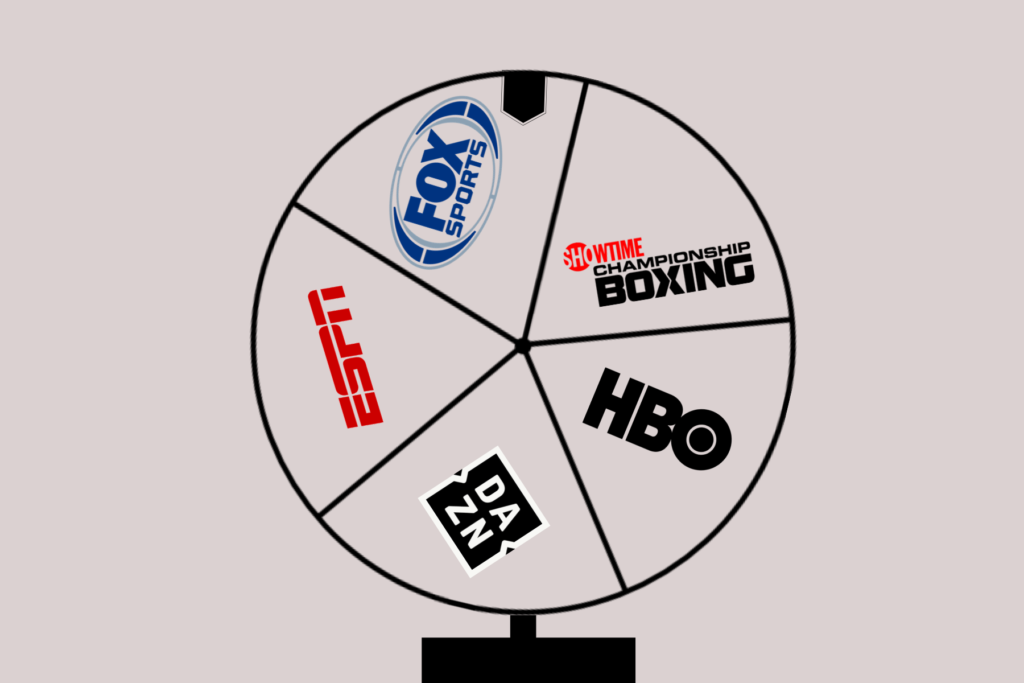Network Politics

By Eddie Sanchez
The history of boxing is muddied in dirty politics. There are promoters that do not like to work with each other (putting it lightly). The industry has seen many influential members who have paid bribes in exchange for favorable rights and rankings. There are four sanctioning bodies all fighting for the same accreditation. But by far the most interesting, and currently the most divisive, are the issues compounded from network involvement.
Prior to HBO entering the business of boxing, the sport was broadcast on network television. Most prominently on CBS and ABC, fans could enjoy the biggest fights on Saturday mornings and in the prime time television slot. What an amazing concept! Having the most prominent fighters available to the masses to help the sport flourish.
The history of boxing was changed forever when HBO earned the lion’s share of the largest fights. At the time, they quickly set their footing in the market and went on to host some of the most iconic fights including: The Rumble in the Jungle with Muhammad Ali v. George Foreman, Buster Douglas iconic upset KO v. Mike Tyson and Mayweather v. Pacquiao. HBO’s influence in the industry was divisive for fans with their paid service model and additional PPV structure.
By 1983, Showtime entered industry as HBO’s primary competitor, which offered a fight for promoter rights, fighter’s exclusivity and with starting a free market price war. While this was great business for each party involved, the fans lost because they had to fork over $100s of dollars to view their favorite fighters throughout the calendar year. Entering the 2010s, Showtime doubled down and gave Floyd Mayweather the largest contract, at the time, which is still the the largest guarantee per fight of $35 million per, plus guaranteed PPV buy share.
The primary issue with these networks, is that their influence saw them become exclusive partners to the point where the biggest fights were not happening! The most prominent example is between Pacuiao, Top Rank, Bob Arum and HBO versus Mayweather, Al Haymon and Showtime. The fight was first introduced as a legitimate option, and arguably at its peak interest level, in 2010. The networks refused to budge on guaranteed money and promotion, the fighters argued about their billing on the draw and PPV share and the fans ended up seeing a watered down version, in 2015, for what could have been the true “Fight of the Century.”
It must be understood that this political climate has affected nearly the entirety of each promotional stable. The current mega-fight in-the-waiting is Spence v. Crawford, which is one that the fans might not be able to see anytime soon because of Errol Spencer’s injuries. Fortunately, Crawford’s development was not affected despite the fact that many of the top light welterweight and welterweight fighters are signed with Showtime (and now Fox) and Al Haymon.
Although HBO is no longer in the fight game, this mess is still prominent, just with different backing. ESPN essentially replaced HBO by supporting Bob Arum and Top Rank exclusively. Additionally, DAZN is a third party which has added another layer to navigate through.
On the brightside, it seems as though the network politics are slowly toning down a bit. DAZN has successfully worked with both ESPN and Showtime/Fox fighters. They’re streaming platform and willingness to meet in the middle of negotiations has been a breath of fresh air.
As fans, all we can do is hope that these behaviors will continue to support the fight fan and offer the fighters the best opportunity for career development.
What can the networks do for the fans going forward to benefit the sport?